As concerns about indoor air quality continue to rise, many individuals are seeking natural and sustainable solutions. One question that frequently arises is, “Does bonsai increase air quality?” The answer is a resounding yes. Bonsai trees, with their ancient roots in art and horticulture, offer an eco-friendly solution for improving the air we breathe indoors.
In this blog post, we will explore:
- The role of bonsai trees in enhancing indoor air quality.
- Why maintaining good indoor air quality is crucial for our health and well-being.
- How bonsai trees purify the air through the process of photosynthesis, and their effectiveness in removing toxins and pollutants.
- The unique benefits of indoor bonsai trees over regular air purifying plants.
- A variety of bonsai tree species are known for their air purification capabilities.
- Additional benefits of bonsai trees, such as their aesthetic appeal, mental well being, and suitability for small spaces.
- How creating a synergy of different bonsai trees can improve air quality and create appealing micro-ecosystems.
By the end of this post, you’ll understand why adding a bonsai tree to your living or working space can significantly improve air quality, and you’ll be equipped with the knowledge to choose the right bonsai tree for your needs.
Why Indoor Air Quality Matters

Improving air quality is a critical issue, often unseen but with far-reaching impacts on our health and well-being. Given that we spend a significant portion of our lives indoors, it’s crucial to understand the importance of clean air in our homes, offices, and other enclosed spaces.
The Health Implications of Poor Indoor Air Quality
Air quality isn’t just about what’s outside; it also involves what’s inside our homes and workplaces. Poor indoor air quality can lead to a host of health problems. From triggering allergies and asthma to causing more severe conditions such as chronic obstructive pulmonary disease (COPD), the health implications can be grave.
In addition, poor air quality increases psychological stress levels and can lead to feelings of exhaustion, low motivation, and lowered productivity.
Impact on Productivity and Well-being
Beyond physical health, indoor air quality significantly affects our mental health and productivity. Studies have shown a direct link between air quality and cognitive function. Staying focused and productive in an environment full of poor air quality can be difficult. Poor indoor air quality can lead to decreased concentration, lowered productivity, and increased stress levels.

In an era when remote work is becoming more prevalent, it’s crucial to ensure the air we breathe at home is clean and healthy. After all, a healthier living space translates to a happier, more productive you.
The Importance of Clean Air
Given the potential health risks and detrimental effects on productivity, maintaining good indoor air quality should be a priority for everyone. It’s not just about removing harmful air pollutants but also about creating an environment conducive to good health and overall well-being.
This is where the role of bonsai trees comes into play. As natural air purifiers, they help to improve indoor air quality by removing toxins and increasing oxygen levels. This also features a calming effect to promote relaxation, which can further improve mood and productivity. In the next section, we’ll explore how bonsai trees contribute to cleaner, healthier air in our indoor spaces.
How Bonsai Trees Impact Air Quality
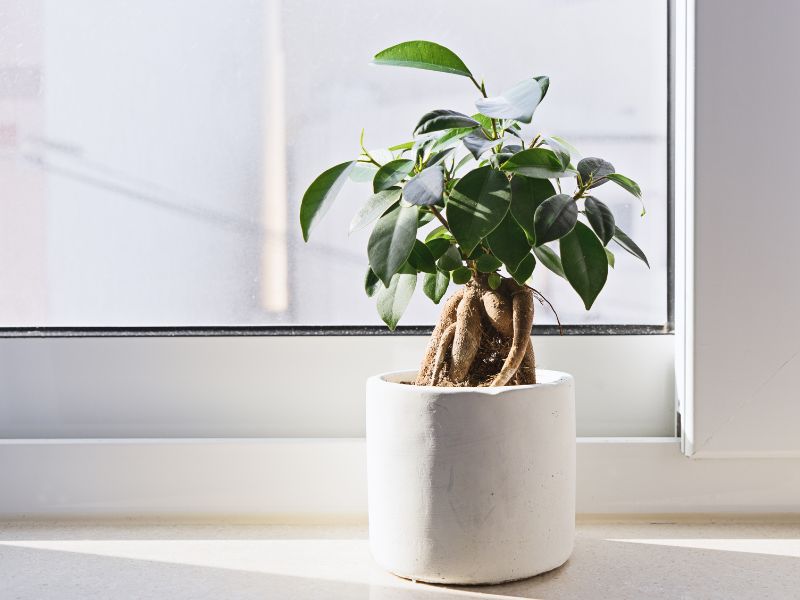
Bonsai trees are not just beautiful and compact art pieces; they also play a significant role in how bonsai increase air quality, thereby improving indoor air conditions. Let’s take a look at how these miniature trees work their magic.
Photosynthesis: The Natural Air Purification Process
First, let’s understand the general process of photosynthesis that all plants, including bonsai trees, undertake. In this process, it involves absorbing and converting carbon dioxide molecules (CO₂) and light energy to produce oxygen (O₂) and glucose. This means that while we humans breathe in oxygen and exhale carbon dioxide, plants do the exact opposite, creating a beautiful symbiosis that enhances air quality.
Removing Toxins and Pollutants
Next, bonsai trees, like other plants, can clean the air by absorbing toxins and pollutants. They take in harmful substances such as benzene, formaldehyde, and other volatile organic compounds (VOCs) through tiny openings in their leaves called stomata. These substances are then broken down and stored in the plant’s tissues or released into the soil, effectively removing them from the air we breathe.
Increasing Oxygen Levels
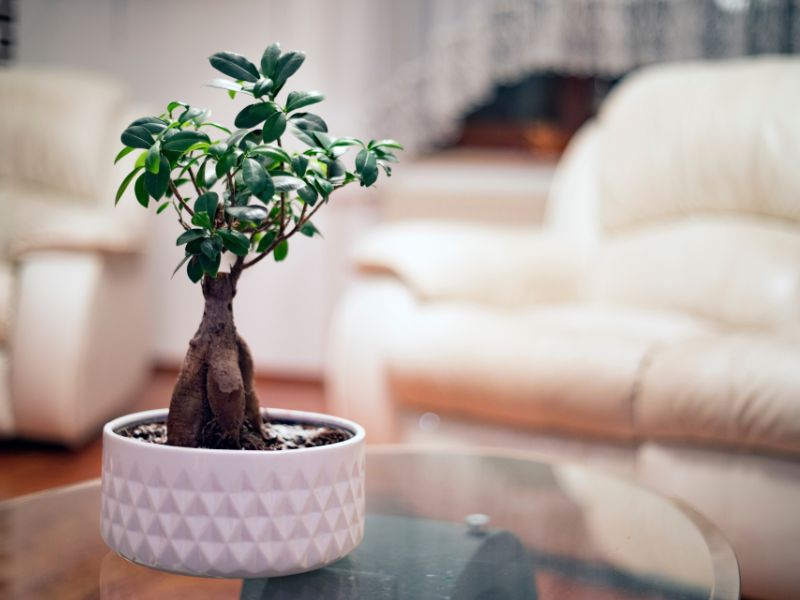
As part of photosynthesis, bonsai trees release oxygen back into the air, a process through which bonsai increase air quality. This increase in oxygen levels can bring several benefits to human health, including improved concentration and sleep quality, reduced fatigue, and even increased happiness.
Unique Benefits of Indoor Bonsai Trees
What sets bonsai trees apart from regular houseplants in terms of air purification? Their size and longevity. Bonsai trees are carefully pruned and maintained to remain small, making them perfect for indoor spaces where room is at a premium. Despite their small size, they can live for many years, even centuries, providing long-term air purification benefits.
Bonsai Tree Varieties for Air Purification
While all bonsai trees offer some level of air purification, certain species are particularly adept at removing toxins and pollutants. Here are some of the best bonsai tree varieties known for their air-purifying abilities:
#1 – Ficus Bonsai
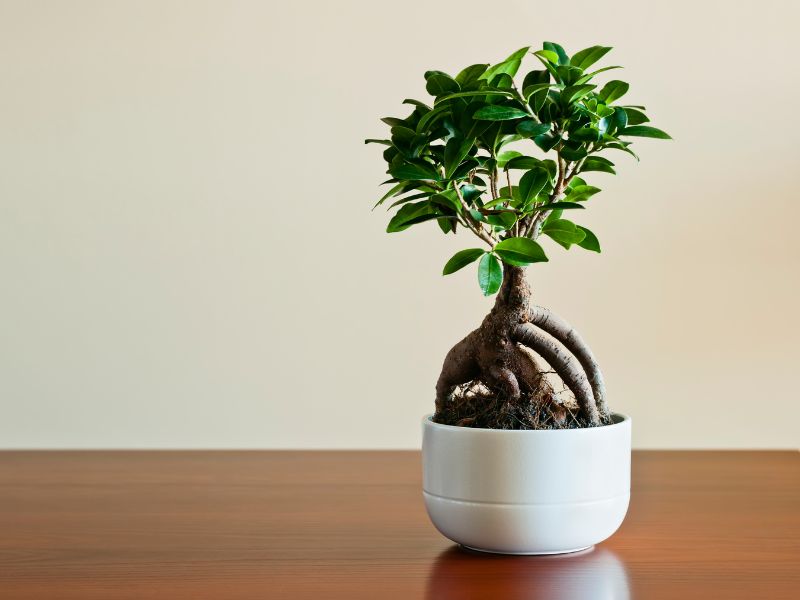
One of the most popular choices for indoor bonsai plants, Ficus trees are well-known for their air-purifying capabilities. They’re particularly good at filtering out formaldehyde, a common indoor pollutant found in many household products.
Air Quality Benefits: Excellent at removing formaldehyde and other VOCs.
Care Level: Easy to care for, making them perfect for beginners.
#2 – Azalea Bonsai
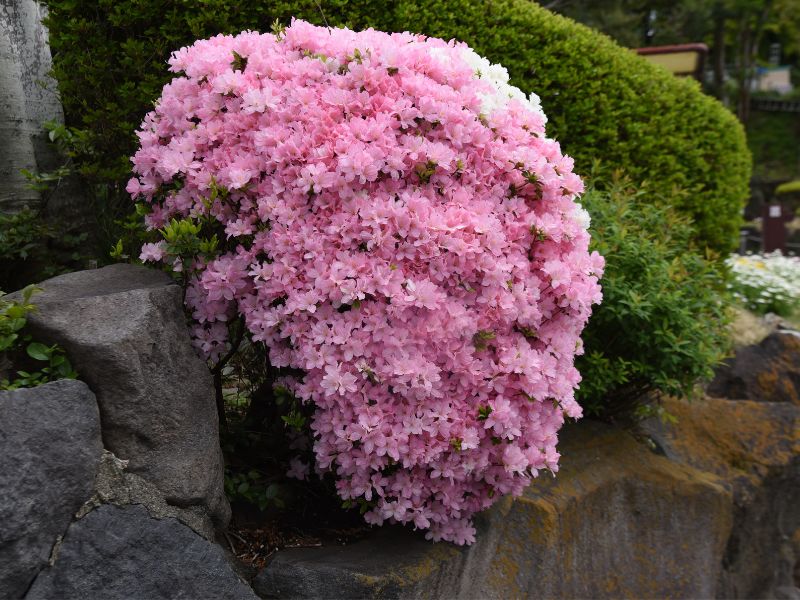
Azaleas are another excellent choice for improving indoor air quality. These beautiful flowering bonsais not only add a dash of color to your space but also help remove harmful indoor air pollutants.
Air Quality Benefits: Efficient at removing formaldehyde from the air.
Care Level: Requires a bit more attention compared to other varieties, but their beauty makes it worth the effort.
#3 – Juniper Bonsai
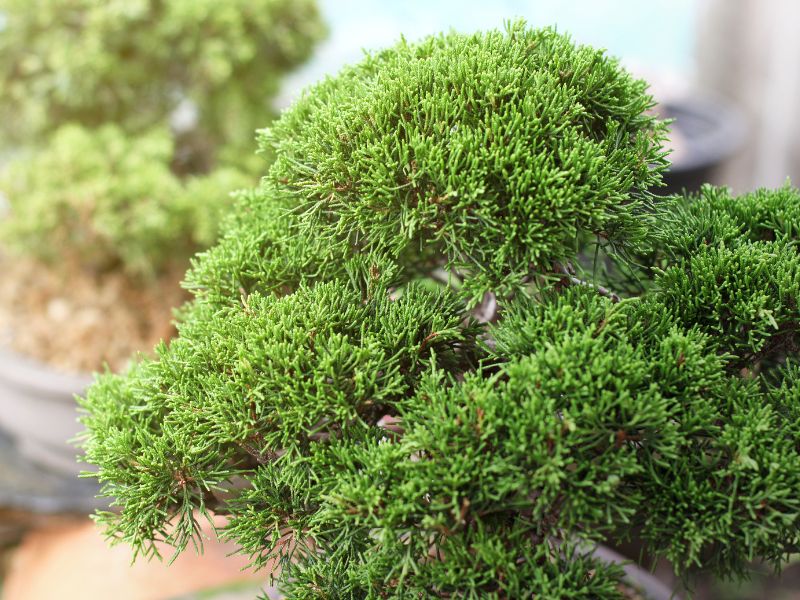
Juniper bonsais are great at purifying the air. They absorb indoor pollutants through their foliage and emit fresh oxygen, improving the overall air quality.
Air Quality Benefits: Good at absorbing various indoor pollutants.
Care Level: Fairly easy to maintain, but they do require plenty of sunlight.
#4 – Schefflera Bonsai
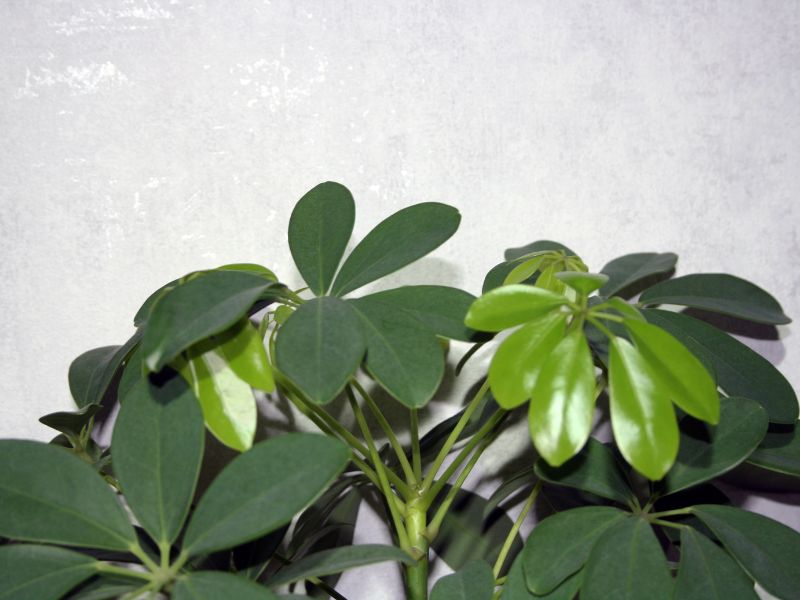
Schefflera, also known as umbrella trees, are excellent air purifiers. They’re particularly effective at filtering out toxins like benzene and formaldehyde.
Air Quality Benefits: Effective at removing benzene and formaldehyde.
Care Level: Quite hardy and easy to care for, making them an ideal choice for those new to bonsai.
#5 – Dwarf Jade Bonsai
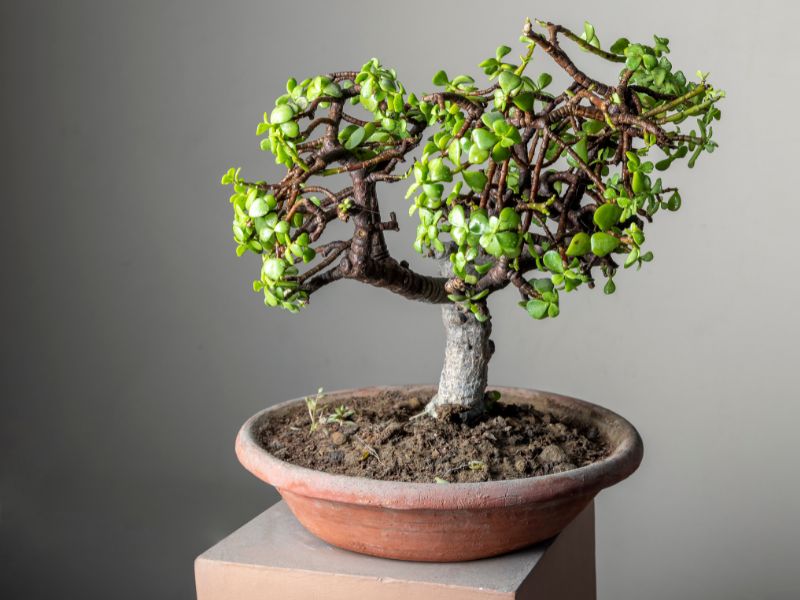
Dwarf Jade bonsais are succulent plants that are highly efficient at cleaning the air. They’re especially good at removing toluene, a solvent found in many household items.
Air Quality Benefits: Efficient at removing toluene from the air.
Care Level: Easy to care for and can tolerate a variety of indoor conditions.
Bonsai Tree Synergy
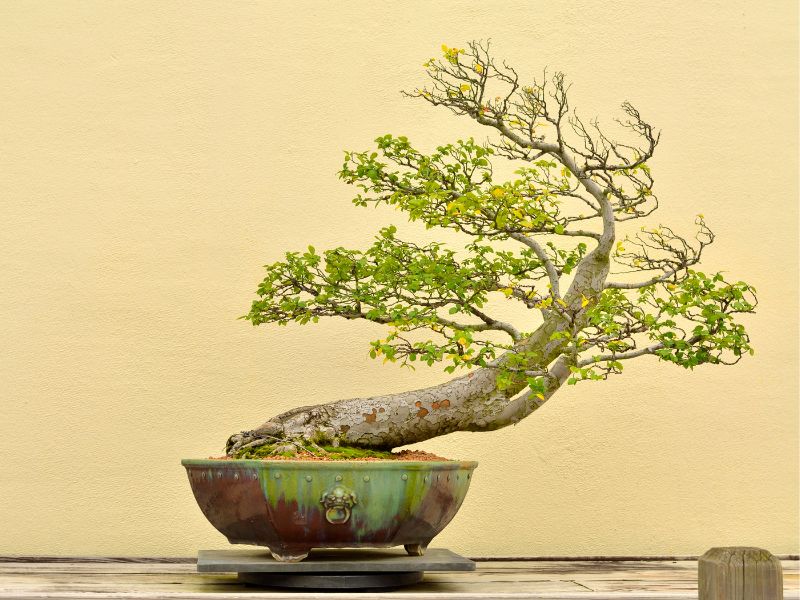
The numerous benefits of bonsai trees for indoor air quality are impressive, but their impact can be further enhanced when different species are combined. Here’s how:
Diverse Air Purification Benefits
Each bonsai tree species has unique air purification capabilities. By having multiple species, you can benefit from a broader range of air purifying properties. For instance:
Snake Plant Bonsai (Dracaena trifasciata): Known for removing toxins such as benzene, formaldehyde, xylene, and toluene.
Pothos Bonsai (Epipremnum aureum): Effective in eliminating formaldehyde, xylene, and benzene.
ZZ Plant Bonsai (Zamioculcas zamiifolia): Excellent at absorbing xylene, toluene, benzene, and ethylbenzene.
Spider Plant Bonsai (Chlorophytum comosum): Efficient in filtering out formaldehyde, xylene, and toluene.
By combining these species, you ensure that a wide array of toxins and pollutants are addressed, creating a healthier indoor environment.
Aesthetic Appeal
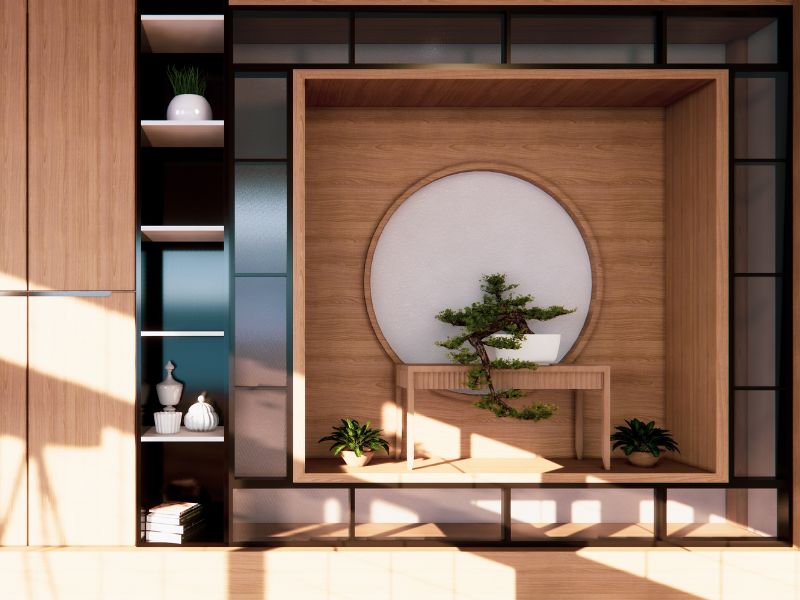
Bonsai trees are stunning, and a collection of different species can create a visually pleasing indoor landscape. Each species has its own unique characteristics. They can turn any indoor space into a miniature garden paradise.
Creating Micro-Ecosystems
Bonsai trees can also contribute to creating micro-ecosystems within your home or office. They not only purify the air but also regulate humidity levels, providing a conducive environment for other plants and indoor wildlife.
For instance, if you have a terrarium with small insects or reptiles, they would thrive in the improved conditions provided by the bonsai trees.
Final Thoughts
Bonsai trees are more than just a captivating art form. They are nature’s small but mighty warriors, silently combating indoor air pollution one day at a time. Adding a bonsai tree to your living or working space can do wonders for the air quality, and here’s why:
- Air Purification: Bonsai trees, through photosynthesis, remove harmful toxins and pollutants from the air, making it cleaner and healthier to breathe.
- Increased Oxygen Levels: As byproducts of photosynthesis, bonsai trees release oxygen, which is beneficial for our general well-being.
- Diversity of Benefits: Different bonsai species offer varying air purification capabilities. By combining multiple species, you get a wider range of air-cleaning benefits.
- Micro-Ecosystems: Bonsai trees contribute to creating micro-ecosystems, which could support other plants and indoor environments.
Now that you know the significant role these miniature trees play in improving indoor air quality, it’s time to explore the fascinating world of bonsai. Whether you’re looking to enhance the aesthetic appeal of your room, create a calming atmosphere, or bonsai increase air quality, a bonsai tree could be just the addition you need. Their ability to improve air quality makes them an ideal choice for enhancing your living space.
So why not bring a piece of nature indoors and breathe easier with a bonsai tree? It’s an investment in your health and happiness that you won’t regret.





0 Comments